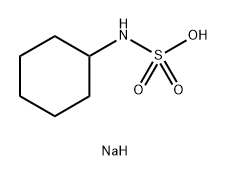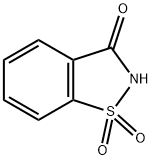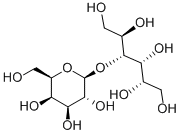A7302912
Sodium Cyclamate , 99% , 139-05-9
Synonym(s):
Sodium cyclamate;Sodium cyclohexanesulfamate;N-Cyclohexylsulfamic acid sodium salt;Cyclamic acid sodium salt;Cyclohexanesulfamic acid sodium salt
CAS NO.:139-05-9
Empirical Formula: C6H12NNaO3S
Molecular Weight: 201.22
MDL number: MFCD00003827
EINECS: 205-348-9
| Pack Size | Price | Stock | Quantity |
| 100G | RMB49.60 | In Stock |
|
| 500G | RMB118.40 | In Stock |
|
| 1KG | RMB168.80 | In Stock |
|
| others | Enquire |
Update time: 2022-07-08
PRODUCT Properties
| Melting point: | >300 °C (lit.) |
| Density | 1.58[at 20℃] |
| vapor pressure | 0.002Pa at 150℃ |
| storage temp. | room temp |
| solubility | 200g/l |
| form | Powder |
| color | White |
| PH | 5.5-7.5 (100g/l, H2O, 20℃) |
| Odor | Odorless. Sweet taste, perceptible at concentrations higher than 100 ppm in water. |
| Water Solubility | >=10 g/100 mL at 20 ºC |
| Merck | 14,2703 |
| BRN | 4166868 |
| Stability: | Hygroscopic |
| InChIKey | UDIPTWFVPPPURJ-UHFFFAOYSA-M |
| LogP | -2.63 at 20℃ |
| CAS DataBase Reference | 139-05-9(CAS DataBase Reference) |
| IARC | 3 (Vol. Sup 7, 73) 1999 |
| EPA Substance Registry System | Sodium cyclamate (139-05-9) |
Description and Uses
Sodium Cyclamate is an artificial sweetener and is 30 times as saccharose's. It is widely used in pickles, seasoning sauce, cakes, biscuits, bread, ice cream, frozen sucker, popsicles, drinks and so on, with a maximum amount of 0.65g/kg. Secondly, it is used in confect, with a maximum amount of 1.0g/kg. Thirdly, it is used in orange peel, preserved plum, dried arbutus and so on, with the largest amount of 8.0g/kg. It is also used in cosmetics and pharmaceutical industry.
Safety
| Symbol(GHS) |  GHS07 |
| Signal word | Warning |
| Hazard statements | H302 |
| Precautionary statements | P264-P270-P501-P301+P312a-P330-P501a-P301+P312+P330 |
| Hazard Codes | Xn |
| Risk Statements | 22 |
| Safety Statements | 36/37-24/25 |
| WGK Germany | 3 |
| RTECS | GV7350000 |
| TSCA | Yes |
| HS Code | 29299000 |
| Toxicity | Sodium cyclamate is a non-nutritive sweetener that is about 30 times sweeter than cane sugar. The oral LD50s in rats and mice are 15.25 and 17.0 g/kg, respectively. It was banned as a food additive because of findings that it caused bladder cancer in rodents. It appears to act as a promoter. There is also evidence that it causes toxicity in the male reproductive system. |




